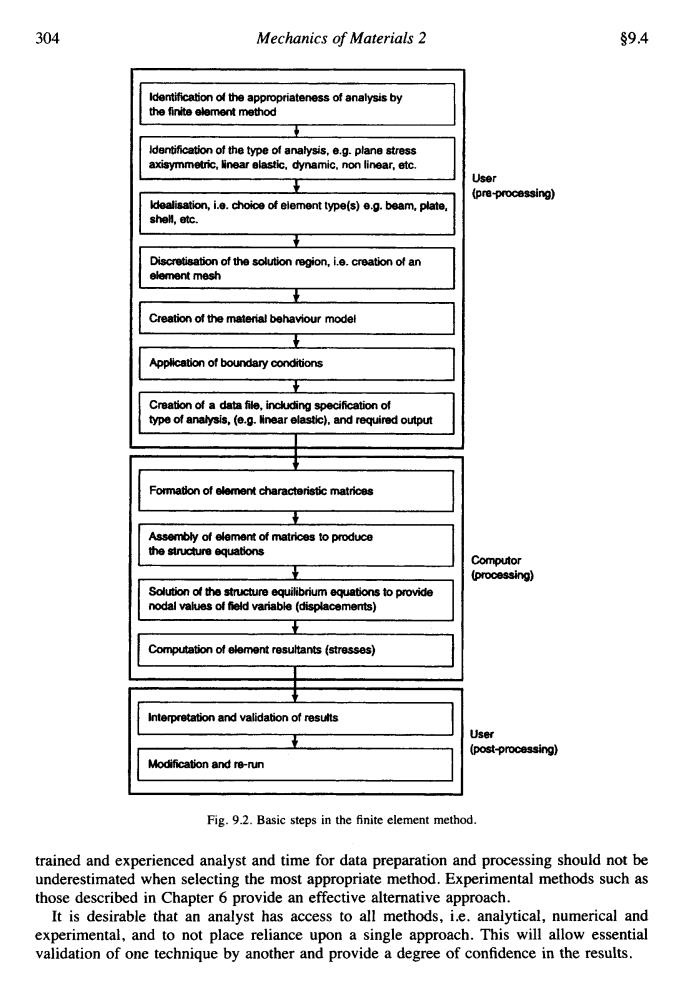正在加载图片...

304 Mechanics of Materials 2 s9.4 ldentification of the appropriateness of analysis by the finite element method ldentification of the type of analysis,e.g.plane stress axisymmetric,Ninear elastic.dynamic.non linear,etc. User (pre-processing) ldealisation,i.e.choice of element type(s)e.g.beam,plate. shell.etc. Discretisation of the solution region,i.e.creation of an element mesh Creation of the material behaviour model Application of boundary conditions Creation of a data file,including specification of type of analysis,(e.g.Nnear elastic).and required output Formation of element characteristic matrices Assembly of element of matrices to produce the structure equations Computor (processing) Solution of the structure equilibrium equations to provide nodal values of field variable (displacements) Computation of element resultants (stresses) Interpretation and validation of results User (post-processing) Modification and re-run Fig.9.2.Basic steps in the finite element method. trained and experienced analyst and time for data preparation and processing should not be underestimated when selecting the most appropriate method.Experimental methods such as those described in Chapter 6 provide an effective alternative approach. It is desirable that an analyst has access to all methods,i.e.analytical,numerical and experimental,and to not place reliance upon a single approach.This will allow essential validation of one technique by another and provide a degree of confidence in the results.304 Mechanics of Materials 2 $9.4 Identification d the appmpriateness of analysis by axisymmetric. linear elastic, dynamic, non linear, etc. + Idealisation, i.a. choice of element type(s) e.g. beam, plate. shell, etc. t Discretisation of the solution region, i.e. creation of an elementmesh Creation of the matecial behaviour mcdel + t Application of boundecy conditions Creation of a data file, induding specification of tvpe of analysis, (e.g. linear elastic), and required output I + I I I Fonnatkn of ebment characteristic matrices + AgtemMy of element of matrices to produce thestruchweequations I I Sdution d the sttucture equilibrium equptions to provide t lntarpretabjon and validation of results I + Modification and re-run Fig. 9.2. Basic steps in the finite element method. trained and experienced analyst and time for data preparation and processing should not be underestimated when selecting the most appropriate method. Experimental methods such as those described in Chapter 6 provide an effective alternative approach. It is desirable that an analyst has access to all methods, i.e. analytical, numerical and experimental, and to not place reliance upon a single approach. This will allow essential validation of one technique by another and provide a degree of confidence in the results